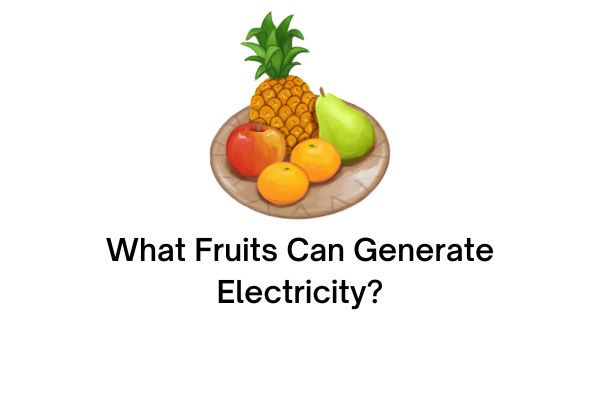Fruits are not only refreshing, but also capable of producing electricity. This phenomenon occurs through the principle of bioelectricity, where some fruits have this principle. Here is a list of fruits that can generate electricity:
Daftar Isi
1. Oranges or Lemons
Oranges and lemons, two types of fruit that are rich in citric acid compounds, can act as an alternative in making electrolyte solutions. The presence of these compounds gives a distinctive acidic character to these fruits, which can be exploited to produce electrical energy.
A simple experiment shows that just one lemon can produce a voltage of up to 1 volt.
However, if the number of lemons used is increased, the voltage produced will also increase proportionally. In addition to citric acid compounds, lemons also contain various other contents that are beneficial to health, such as vitamin C, glucose, amino acids, and vitamin B.
Thus, lemons not only provide benefits as a source of vitamins and antioxidants, but also have the potential as an environmentally friendly source of electrical energy.
2. Bananas
One of the other benefits of bananas is as an alternative source of energy. Bananas are rich in energy value obtained from their calories. There are 136 calories in every 100 grams of bananas, an amount that is twice as high as apples.
In addition, bananas also contain important minerals such as potassium, phosphorus, magnesium, and iron. Like apples, the potassium content in bananas can produce electricity when it reacts with the sodium salt in the skin.
3. Apples
One type of fruit that produces electricity is apples. This popular fruit contains potassium, magnesium, vitamin C, and flavonoids. The acid or potassium content in apples makes them have the potential to produce electricity.
When a metal plate is inserted or stuck into an apple, a chemical reaction will occur that can produce electricity at a low level.
However, compared to other acidic fruits, such as oranges, the level of electricity production from apples tends to be lower.
4. Limes
Limes, like batteries in general, contain acids that act as electrolytes, capable of producing electrical energy. The chemical process that occurs between the acid in limes and the plates is the key to producing this energy.
When a chemical reaction occurs between the two, that is the point at which electrical energy can be efficiently generated. Thus, lime is not only a refreshing and healthy fruit, but also has the potential to be used in the context of alternative energy technology.
5. Mango
Connecting mango fruit with copper (Cu) and zinc (Zn) elements produces the potential to generate electrical energy. Mango fruit naturally has a potential of around 1.4 to 1.5 volts, although this amount is not enough to provide a large enough electricity supply.
However, with the size of the potential, there is a possibility to develop a dry battery concept using mango fruit as one of its components.
In this context, mango fruit can be used as an environmentally friendly alternative energy source, and can be a solution to overcome the challenges in providing electrical energy in remote areas or where conventional electricity sources are difficult to access.
By optimizing technology and further research, the potential use of mango fruit in the energy sector can continue to be explored and developed for sustainability and technological progress.
6. Cucumber
The unique process of why cucumbers are able to generate electricity is closely connected to the abundant water content in them. In particular, the conductive nature of water in cucumbers opens up opportunities for this phenomenon to occur.
When cucumbers are cut or crushed, their cellular structure is disrupted, allowing positive and negative ions in the water to move freely.
This creates conditions in which an electric current can form, often due to the electrochemical potential that exists between the solutions in the cucumber cells that are disturbed.
Thus, it can be concluded that the availability of water and its conductive properties make cucumber a medium that can produce electricity under certain conditions.
7. Starfruit
Starfruit, with its high acidity characteristics, is able to provide ideal conditions for conducting ions and electrons. This allows interactions that produce electric current when in contact with materials such as copper and zinc plates.
Thus, the alternative energy potential of starfruit is becoming increasingly interesting to explore. With its natural properties that allow electrical conductivity, starfruit appears as an interesting option in efforts to develop more sustainable and environmentally friendly energy sources.
That’s a list of fruits that produce electricity. So maybe these fruits can be developed to later become a source of electrical energy to meet the world’s electricity needs.
